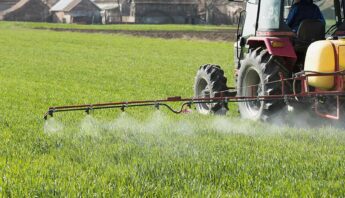With scrutiny of Monsanto’s flagship herbicide RoundUp increasing, the corporation’s defense of the product is in high gear. And right now, a recent Reuters article is doing the work on behalf of the biotech giant to discredit a scientist who contributed to the 2015 International Agency for Research on Cancer (IARC) finding that glyphosate — RoundUp’s active ingredient — is a “probable carcinogen.”
The June 14 article claims that this scientist withheld data indicating glyphosate was not, in fact, linked to cancer — and suggests that a publication that would have included this data on glyphosate was delayed for nonscientific reasons.
Carey Gillam, a former Reuters reporter and the current research director with U.S. Right to Know, responded directly to the article. She said this:
It was a big story that scored big points for Monsanto in the debate over glyphosate safety. But drilling deeply into the sourcing and selective nature of the Reuters piece makes it clear the story is not only seriously flawed, but that it is part of an ongoing and carefully crafted effort by Monsanto and the pesticide industry to discredit IARC’s work.”
Indeed.
Did a scientist “withhold” data? Nope.
Monsanto’s claims (through Reuters) that an IARC scientist “withheld” data from the panel’s review are misleading. In fact, IARC only considers published data, making the unpublished study irrelevant for IARC’s consideration at the time the committee was convened. In the future, the published study could be considered by IARC.
Agencies have frameworks that govern what kind of data they will consider, and how to make decisions. The Office of Pesticide Programs at the U.S. Environmental Protection Agency (EPA), for instance, conducts risk assessments for pesticide registrations, and companies registering a pesticide submit their unpublished data. In contrast, IARC does hazard assessments, not risk assessments. This means that IARC looks at whether the substance in question can cause cancer, but it doesn’t make determinations on exposure and other aspects of risk.
Certain rules are made, and followed, by each agency. And because there are rules, there are limitations. For instance, IARC’s use of published studies ensures that their determinations are based on studies that have been peer-reviewed. There is no such requirement for unpublished data. In the past, we’ve critiqued EPA’s use of industry-provided unpublished data — and for having a framework that isn’t flexible enough to incorporate findings from peer-reviewed studies.
While the Monsanto VP of strategy wrongly said that IARC “ignored” data, IARC simply adhered to their own rules of data governance. And Monsanto is spinning the story because they don’t like IARC’s conclusion.
Publish or perish
The other issue raised in the Reuters article is regarding unpublished glyphosate and cancer data, and why these findings haven’t yet been published as a peer-reviewed study. The data in question are from a very large cohort study in the U.S. called the Agricultural Health Study (AHS), which has about 89,000 participants — mostly pesticide applicators (many of whom are farmers) and their spouses.
The unpublished AHS data Monsanto is upset about shows no link between glyphosate and non-Hodgkin lymphoma, according to legal testimony. But there were other studies the epidemiologist discussed in the deposition that do demonstrate a link, which is not mentioned in the Reuters article. And there were many studies — both epidemiology and laboratory animal studies — that contributed to IARC’s conclusion on glyphosate being a probable carcinogen.
Still, Monsanto argues that the data were not published because they showed no link, but (from what I can tell) this is a mischaracterization of events. In his deposition, Blair stated that the unpublished data required “cautious interpretation,” because the sample size was relatively small.
A researcher’s currency is the record of peer-reviewed publications produced. They carefully consider what type of journal to publish in, and every journal has requirements and limitations about quantity of data and word count. Additionally, each journal submission is reviewed by other scientists and that can take a few months. A paper can get rejected, or accepted pending revisions — and the researchers may then decide to edit the paper accordingly so that it’s acceptable for publication.
In short, there are a number of reasons that might contribute to waiting on publishing study results.
Given all of this, it’s no shocker that the AHS researchers decided that they had too much data for one paper, among their other reasons for not publishing just yet. In his testimony, the scientist Monsanto is attempting to discredit stated that the work the AHS was doing on these studies was “not ready to submit to journals.”
Monsanto’s claims of some sort of misconduct don’t amount to much more than an attempt to undermine IARC’s finding that glyphosate is a “probable carcinogen.” And they just don’t hold up under close examination.
And while we mull over this mess, hundreds of millions of pounds of glyphosate are used each year across the globe. Even without the likelihood that this herbicide is linked to cancer, this is a cause for concern and closer examination.








